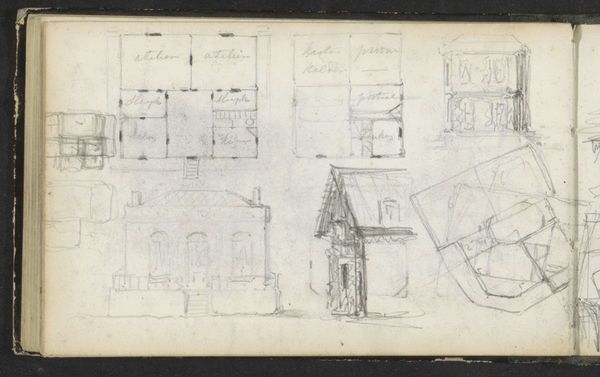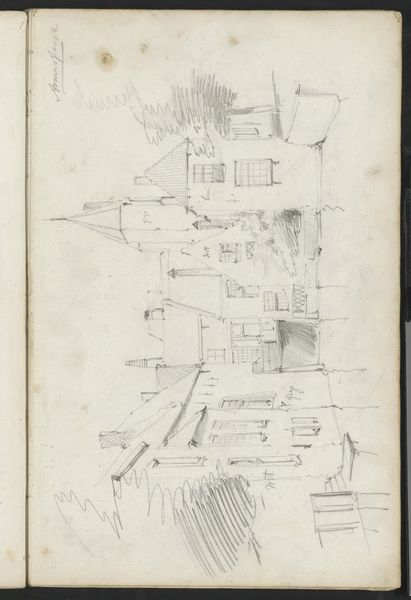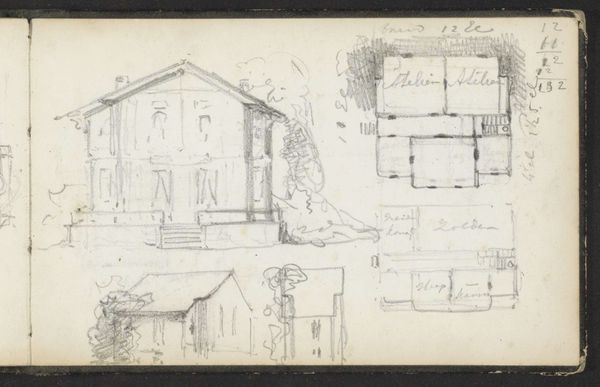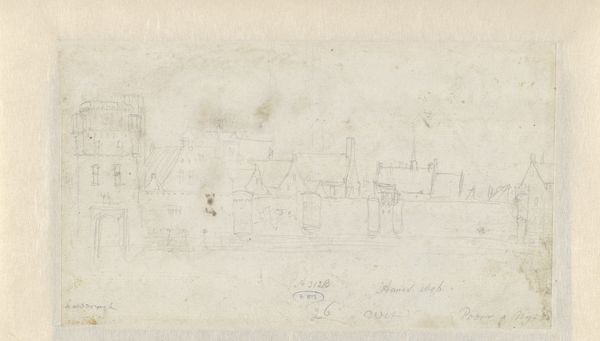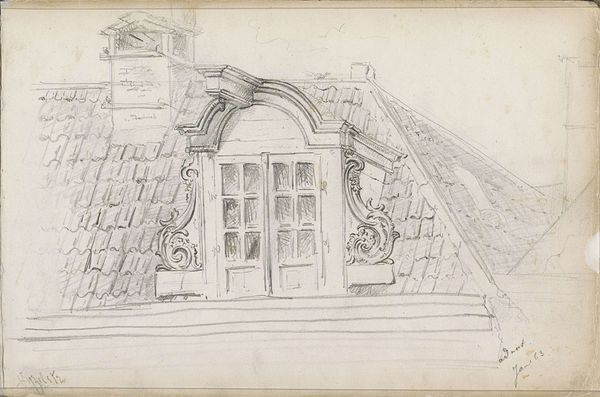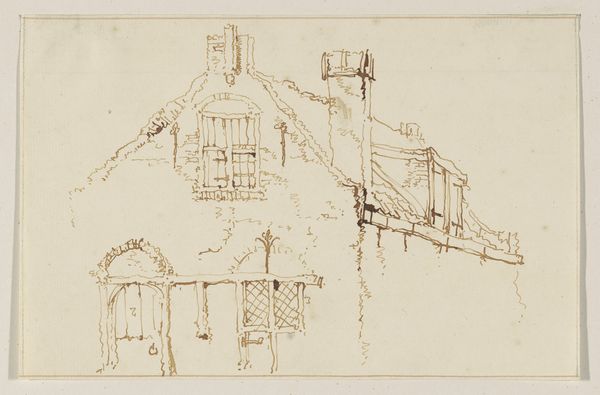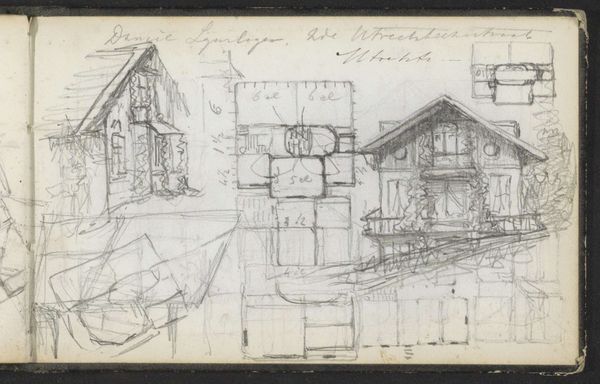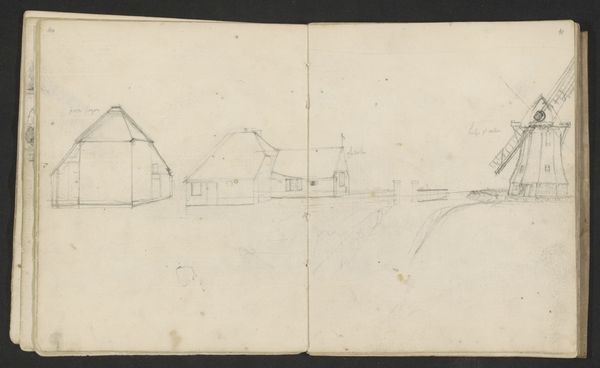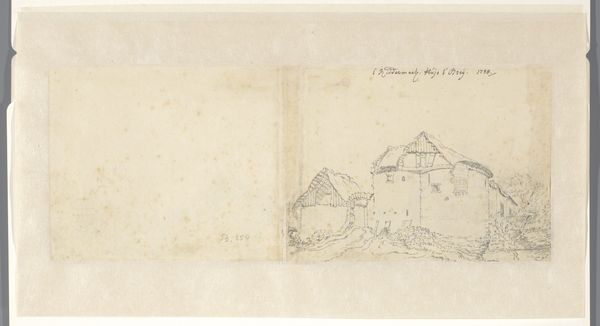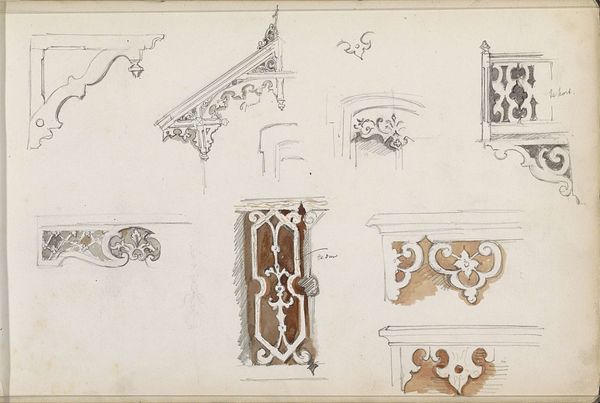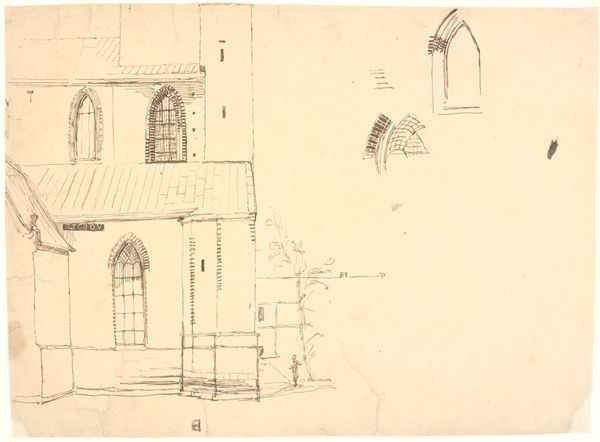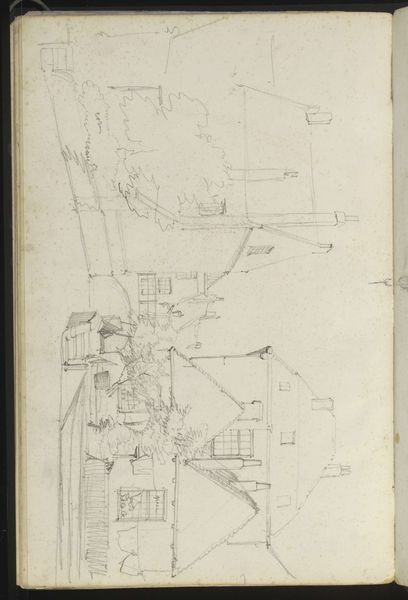
drawing, ink, pencil, pen
#
drawing
#
ink drawing
#
narrative-art
#
pen drawing
#
landscape
#
ink
#
pencil
#
pen work
#
pen
#
miniature
Dimensions: 229 mm (height) x 351 mm (width) (bladmaal)
Curator: This is Agnes Slott-Møller's "Skitseblad med diverse motiver og notater," created in 1884. It’s a drawing done with ink and pencil and it resides at the SMK, the National Gallery of Denmark. Editor: My first impression is one of folklore and fantasy. The combination of stark architectural shapes with fluid horn-like curves feels very dreamlike, almost like stills from a silent film. Curator: Slott-Møller came from a well-to-do family, one steeped in the arts. This "Sketch sheet with diverse motifs and notes," offers a glimpse into her creative process, but it is a process reflecting a tension within the artistic circles in the 1880's in Copenhagen, Denmark, where the academicians had strong beliefs about motifs and how art should look like. Editor: It's fascinating to see the recurring motif of figures in doorways or arches. There’s a sense of transition or perhaps even confinement. Doorways are powerful symbols, promising both exit and entry, but are never free to simply stroll through. Curator: Exactly! Doorways often symbolize life’s passages, but could equally speak to women’s prescribed roles during this time, specifically Slott-Møller's roles. Consider her later participation in exhibitions with the Free Exhibition, breaking from the establishment; that's some transition. Editor: And that horn shape! We see it repeatedly framing scenes. Traditionally, horns represent announcements, calls to action, or signals. Here, they seem to amplify these private, quiet moments into something larger, more significant. I see them less as heralds, and more as frames highlighting something worth hearing from another world. Curator: It is hard to disagree that in the late 1800's a symbol, like the horn, also played on national romantic and symbolistic tones which were gaining in popularity at this time, not just in art but music, theater and literature. Slott-Møller and other Danish artists really challenged what was acceptable and pushed boundaries which is very much a call to action of sorts, or a symbol for a future with more acceptance in subject matter. Editor: Considering all the imagery, the use of doorways, horns, it makes one wonder what worlds Agnes wanted to be part of. I leave this looking to explore more about Danish artists' world of symbolism. Curator: And, from a historical perspective, to learn of the societal and cultural forces that framed her career, both literally and figuratively.
Comments
No comments
Be the first to comment and join the conversation on the ultimate creative platform.
